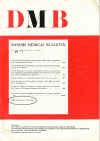葡萄糖依赖性胰岛素多肽(GIP):从激素原到在内分泌、胰腺和脂肪组织中的作用。
摘要
本论文由一篇已发表文章和一篇初稿组成。对肠促胰岛素激素葡萄糖依赖性胰岛素性多肽(GIP)的兴趣被重新点燃,因为发现GIP受体缺陷的小鼠在高脂肪喂养后无法增加体重。然而,从激素原的加工到调节分泌,以及其在参与能量动员的复杂介质网络中作用的确立,其途径尚不完全清楚。在体内发现具有生物活性的GIP1-42依赖于未成熟激素原在肠k细胞中被原蛋白转化酶1/3 (PC1/3)加工。即便如此,约50%的GIP免疫反应细胞不表达PC1/3,这增加了k细胞亚群存在的可能性,其中前体可能在其他位置被切割。细胞系研究确实表明,内分泌细胞类型中的另一种转化酶PC2介导了不同位点的裂解,释放出较大和较小的GIP片段。在小鼠上空肠凝胶过滤提取物中可以检测到类似大小的片段,但这些免疫反应的身份、加工机制和功能尚不清楚。一旦正确处理,GIP1-42就会根据食物摄入而分泌。k细胞被认为直接感知和响应肠道中的营养物质,但由于这种细胞类型的分子谱才刚刚开始,对营养物质感知机制和可能的反馈调节的描述仍然很差。当分泌到血液中时,GIP与其他激素在一个复杂的网络中作为能量动员的中介。GIP的一个急性和既定功能是发挥其肠促胰岛素功能,从而促进葡萄糖刺激胰岛素分泌,这是迅速处置营养物质所必需的,但GIP也刺激胰高血糖素分泌,以提高血糖。在糖尿病状态下,GIP的胰岛素促胰岛素作用受损,早期不适当的餐后胰高血糖素刺激进一步抵消胰岛素的作用,使血糖控制恶化。有研究表明,GIP受体缺陷小鼠对饮食性肥胖具有抗性,并将GIP归类为一种促脂激素,在脂肪组织中具有直接的胰岛素模拟作用。我们能够证明GIP受体在脂质结合到脂肪细胞中的冗余。我们还观察到,GIP受体缺陷小鼠对高脂肪喂养的反应正常,脂肪质量增加,但瘦质量没有增加。在脂肪组织中恢复GIP受体的小鼠在高脂肪饮食中使身体成分正常化,但小鼠的总体重较低。相比之下,胰腺β细胞中表达的GIP受体能够促进低脂肪饮食的瘦体重增加,但在高脂肪饮食中却没有。总的来说,我们已经建立了GIP成熟的主要需求。此外,我们已经证明β细胞和脂肪细胞的GIP受体表达都不能取代内源性GIP受体调节体重和身体组成。The present thesis consists of one published article and one draft manuscript. Interest in the incretin hormone glucose-dependent insulinotropic polypeptide (GIP) was reignited by the discovery that GIP receptor deficient mice were unable to gain weight in response to high fat feeding. However, the path from processing of the prohormone to regulation of secretion and establishment of its role in the complicated network of mediators involved in energy mobilization is not fully understood. The biologically active GIP1-42 was found in vivo to be dependent on processing from the immature prohormone by proprotein convertase 1/3 (PC1/3) in the intestinal K-cell. Even so, ~50% of GIP immunoreactive cells do not express PC1/3 raising the possibility that subsets of K-cells exist in which the precursor may be cleaved at alternative sites. Cell line studies did demonstrate that another convertase in endocrine cell types, PC2, mediated cleavage at alternative sites liberating larger and smaller GIP fragments. It was possible to detect fragments of similar size in gel filtration extracts of murine upper jejunum, but the identity, mechanism of processing and function of these immunoreactivities remains uncertain. Once correctly processed GIP1-42 is secreted in response to food intake. The K-cell is believed to directly sense and respond to nutrients in the intestine, but as the molecular profiling of this cell type has just begun, the nutrient sensing machinery and possible feedback regulation are still poorly characterized. When secreted to the blood stream, GIP acts as a mediator of energy mobilization in a complex network with other hormones. An acute and established function of GIP is to exert its incretin function thereby enhancing glucose stimulated insulin secretion necessary for prompt disposal of nutrients, yet GIP also stimulates glucagon secretion to increase blood glucose. In the diabetic state the insulinotropic effect of GIP is impaired and an early inexpedient glucagon stimulation in response to a meal further counteracts effects of insulin and worsens glycaemic control. A demonstration that GIP receptor deficient mice were resistant to diet induced obesity let to the categorization of GIP as a fat promoting hormone and direct insulin-mimetic effects in adipose tissue has been proposed. We were able to demonstrate a redundancy for the GIP receptor in incorporation of lipids into adipocytes. We also observed that GIP receptor deficient mice could respond normally to high fat feeding with increased fat mass, but failed to increase lean mass. Mice with rescue of the GIP receptor in adipose tissue normalized the body composition in response to high fat diet, but the mice had a lower total body weight. In contrast, the GIP receptor expressed in the pancreatic beta-cell was able to promote lean mass gain on a low fat diet, but not on a high fat diet. Overall, we have established principal requirements for GIP maturation. Furthermore, we have demonstrated that neither beta-cell nor adipocyte GIP receptor expression can replace the endogenous GIP receptor in regulation of body weight and body composition.

 求助内容:
求助内容: 应助结果提醒方式:
应助结果提醒方式:


